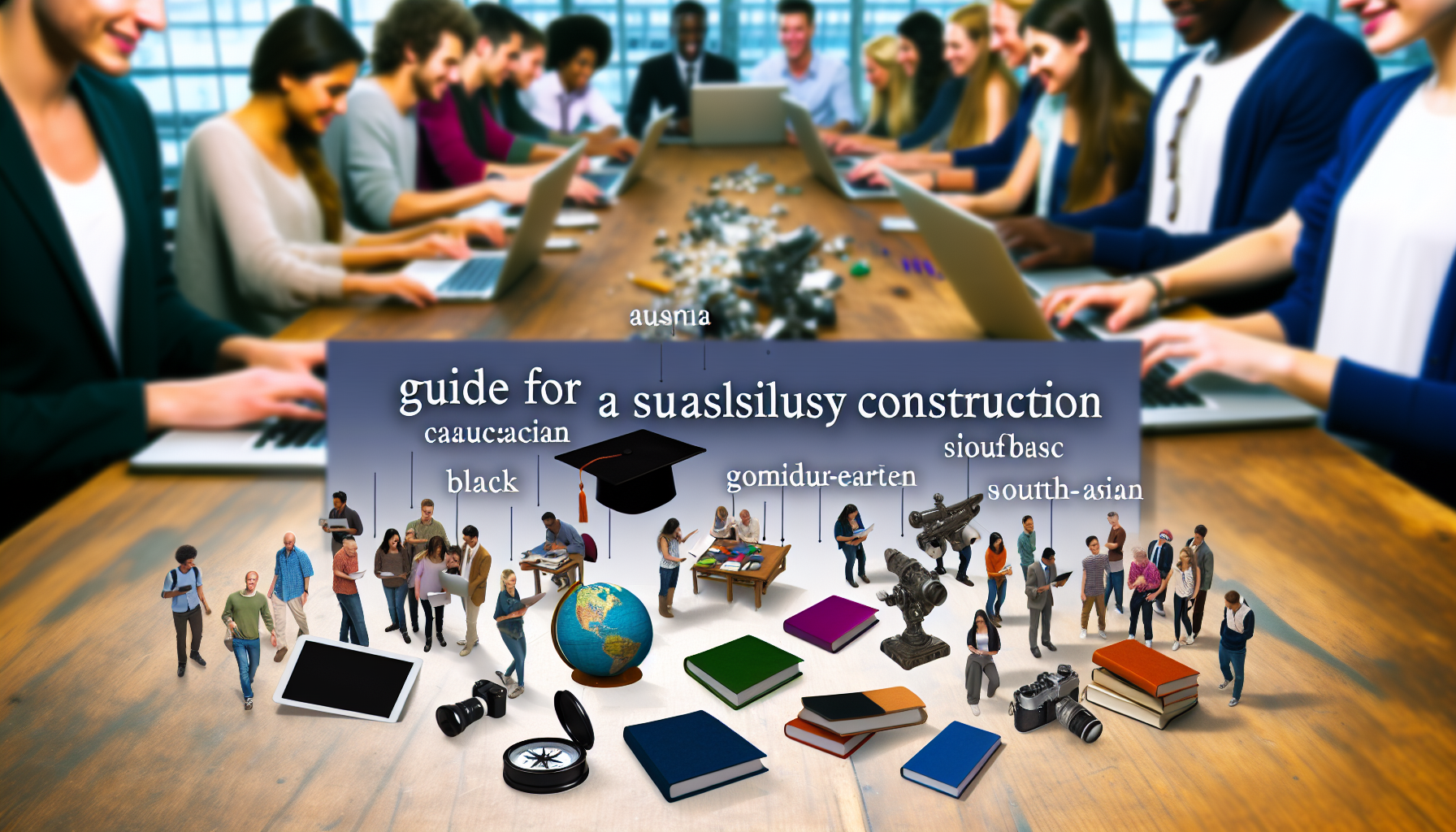Introduction to Syllabus Files
A syllabus file is a vital document that outlines the curriculum and educational experiences a student has undergone during their course of study. For graduates from Philippine universities considering career opportunities abroad, the syllabus file serves several key purposes. Firstly, it offers a comprehensive summary of the subjects taken, along with the corresponding credits and descriptions, facilitating the transfer of educational qualifications recognized by institutions and employers worldwide. This is particularly important in an increasingly competitive international job market where employers seek evidence of a candidate’s educational background.
However, graduates may face challenges such as differences in educational standards and job market expectations, which can complicate the acceptance of their qualifications abroad. Navigating the specifics of each country’s evaluation systems can also pose additional hurdles. Furthermore, graduates often need to demonstrate practical skills, work experience, and language proficiency beyond what is captured in a syllabus file. Therefore, while a syllabus file is significant in presenting their academic achievements, graduates must also enhance their profile with relevant experiences and qualifications to stand out in the international arena. For more insights on how to enhance your job application, visit our other articles on course descriptions.
Key Components of an Effective Syllabus
An effective syllabus serves as a comprehensive guide for both educators and students, outlining the course structure and expectations. Here are the key components that should be included:
- Course Description: A brief overview of the course content, objectives, and relevance to the academic program. This sets the stage for what students can expect and helps them determine their interest in the subject.
- Learning Outcomes: Clear, measurable outcomes that specify what students will learn and be able to accomplish by the end of the course. These outcomes should align with institutional goals and be articulated in a way that encourages student engagement.
- Course Schedule: A timeline of topics, readings, assignments, and exams throughout the semester. This keeps students informed about deadlines and helps them manage their time effectively.
- Assessment Methods: Detailed descriptions of how students will be evaluated, including the types of assessments (e.g., quizzes, projects, exams) and their weight toward the final grade. Clearly defined grading criteria bolster transparency and accountability.
- Teaching Methods: An outline of instructional strategies, including lectures, discussions, group work, and online components. Tailoring these methods to diverse learning styles can enhance student comprehension and involvement.
- Required Materials: A list of textbooks, articles, software, and other resources necessary for the course. Providing options for accessibility can help all students succeed.
- Policies on Attendance and Participation: Clearly stated expectations regarding attendance, participation, and engagement in class activities. This can create a structured yet flexible learning environment.
- Inclusivity Statement: A commitment to diversity and inclusion, ensuring that the classroom is a safe space for all students, regardless of their backgrounds. This promotes equity and respect within the learning community.
- International Recognition Adaptations: For educators looking to align their syllabus with global standards, incorporating internationally recognized frameworks (such as the European Qualifications Framework) can enhance the syllabus’s credibility and relevance on an international scale.
By integrating these components, educators can create an effective syllabus that not only guides the learning experience but also adapts to a global educational environment. For further insights on crafting a syllabus, visit Course Description.
Understanding International Standards
The education syllabus in the Philippines is shaped by various factors, including compliance with international standards set by accreditation bodies. The Commission on Higher Education (CHED) plays a pivotal role in regulating educational programs, ensuring graduates are prepared for both local and global job markets. In contrast to the Philippines, countries like the United States and Australia have their own accreditation systems, such as the National Accreditation Agency for Higher Education (BAN-PT) in Indonesia and the Council for Higher Education Accreditation (CHEA) in the U.S., which also influence their curriculum content significantly.
These bodies emphasize outcomes-based education, which focuses on measurable student outcomes, aligning with competencies demanded by employers globally. Notably, international standards like those from the Accreditation Board for Engineering and Technology (ABET) set benchmarks for various fields, ensuring that programs across borders maintain quality and relevance. The Philippine educational system has increasingly sought to align its curricula with these international standards, facilitating easier transition for graduates wishing to work abroad. For further insights on the role of accreditation in influencing educational standards, explore our article on the impact of accreditation in education.
Steps to Create Your Syllabus File
The process of creating a syllabus file involves several key steps to ensure it meets educational best practices and international standards:
- Define Course Objectives: Begin by clearly outlining the goals of your course. What should students achieve by the end? This should align with the learning outcomes consistent with international educational standards, such as those set by the Association of American Colleges and Universities.
- Create an Outline: Draft a detailed outline of topics and subtopics that will be covered. This will serve as a roadmap for your syllabus, helping you to organize content logically. Consider using frameworks like backward design to ensure alignment between objectives, assessments, and activities.
- Choose a Format: Select a format for your syllabus that is clear and user-friendly. Common formats include a tabular layout or a linear outline. Tools like Canva or Smartsheet offer templates that can facilitate the design process.
- Include Essential Components: Your syllabus should cover critical elements, such as course description, learning outcomes, assessment methods, grading policies, required materials, and a timeline of topics or modules. Refer to examples from institutions like Oregon’s Higher Education Coordinating Commission for comprehensive guidelines.
- Incorporate Policies: Clearly outline any academic integrity policies, attendance requirements, and disabilities accommodations as per the relevant educational regulations. This not only informs students but also protects you as an instructor.
- Utilize Collaborative Tools: Use collaborative platforms such as Google Docs or Microsoft Excel to draft and share your syllabus with colleagues for feedback. This can enhance the syllabus through diverse perspectives and expertise.
- Review and Finalize: Once all components are drafted, review the syllabus for clarity, coherence, and completeness. Ensure it meets any departmental or institutional guidelines.
- Distribute and Update: After finalizing, distribute the syllabus to your students at the start of the course and be prepared to make updates as necessary throughout the semester.
For additional resources and templates, consider visiting Course Description, which offers various tools to assist educators in syllabus creation.
Finalizing and Submitting Your Syllabus
Finalizing your syllabus involves a thorough review of all components to ensure alignment with the course’s objectives and educational standards. It is also crucial to get feedback from peers or department heads to enhance its quality and effectiveness. Once the final version is ready, proper submission protocols must be followed. This may vary depending on institutional guidelines, but typically, it includes submission to the relevant academic board or platform.
Furthermore, it is valuable to consider how the syllabus will be received by students. The clarity and comprehensiveness of a syllabus can significantly influence student engagement and success. Therefore, ensuring that all necessary components are included and accurately communicated will bolster the overall educational experience. For resources to help you through this process, check out the tools and guidelines available at Course Description.
Sources
- Course Description – Course Descriptions
- Course Description – Accreditation in Education
- AAC&U – Learning Outcomes
- Canva – Design Tools
- Google Docs – Collaborative Writing
- Microsoft Excel – Spreadsheet Software
- Oregon’s Higher Education Coordinating Commission – Syllabus Guidelines
- Smartsheet – Project Management Software










